The Sri Lankan government has come under heavy criticism for using a widely condemned draconian counter terror law to question an internationally acclaimed Tamil journalist from the Vanni region.
Counter-Terrorism and Investigation Division (CTID) has summoned leading Tamil journalist and rights defender, Kanapathipillai Kumanan, asking him to appear at CTID Sub-station in Alampil, Mullaitivu on August 17 for an ‘inquiry’, announced Journalists for Democracy in Sri Lanka (JDS) sharing a copy of the summons notice on social media.
Among the journalist’s recent photographs featured in mainstream media, those depicting the excavations of the Chemmani and Kokkuthoduvai mass graves— human burial sites that have drawn international attention, including from the UN—are particularly significant.
The CTID notice does not specify the investigation for which statements are to be recorded from the photojournalist and human rights defender Kanapathipillai Kumanan.
He is deeply worried for being summoned under the Prevention of Terrorism Act (PTA)..
“Before this government came to power, my only hope was that they would repeal the PTA so we could work without fear of it. But now, nearly 10 months into their rule, that hope remains unfulfilled. Compared to the previous government, I feel this one is somewhat better yet my only wish is that they will not harass anyone under the PTA,” said Kumanan taking to X, formerly known as twitter.
Lawyer and social media activist Aingkaran Kugathasan recalls that the police chief has recently directed police top brass to state reasons when summoning people.
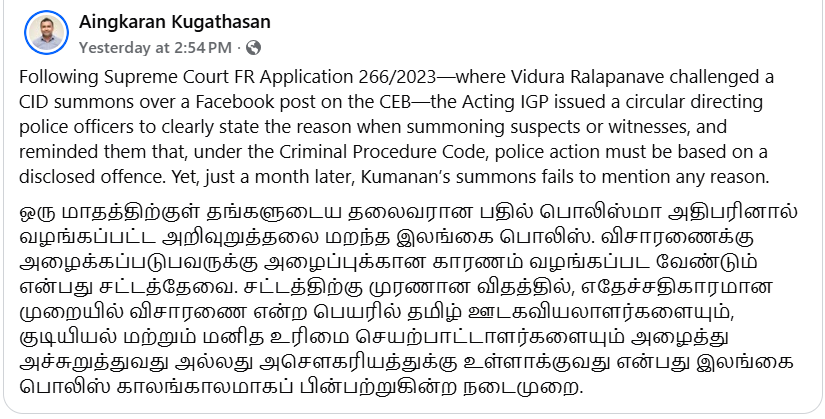
“Kumanan receives a summons with no explanation. Police were reminded they can act only where an offence is disclosed,” says Kugathasan on social media sharing a copy of the circular issued by Acting Inspector General of Police Priyantha Weerasuriya on 2 July.
However, a member of the UN Voluntary Trust Fund for Victims of Torture reveals that Kumanan has indeed been summoned for his coverage on rights issues.
“Reasons given for interrogation/harassment and Qs relate to social media posts on human rights issues, receipt of foreign funding, bringing disrepute to Sri Lanka, internationally publicizing problems faced by Tamils and engagement with the UN and intl community,” says Ambika Satkunanathan.
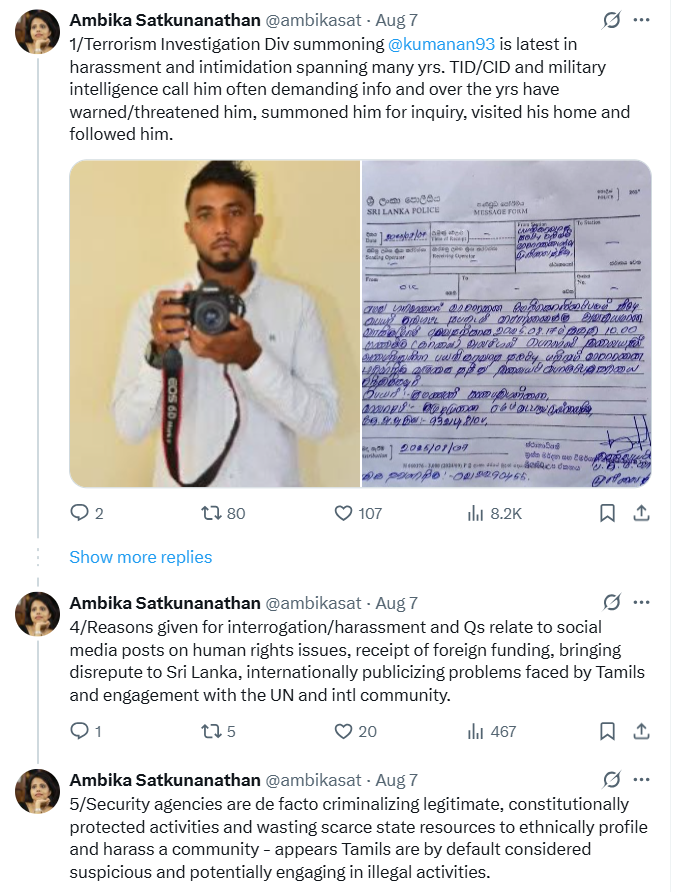
“Security agencies are de facto criminalizing legitimate, constitutionally protected activities and wasting scarce state resources to ethnically profile and harass a community – appears Tamils are by default considered suspicious and potentially engaging in illegal activities,” adds the former Sri Lanka Human Rights Commissioner.
Kumanan’s work, which captures not only the lives of war-affected Tamils in the north and the east but also historical events such as the Galle Face protests that ousted Gotabatya Rajapaksa, has been published in leading international outlets including the Daily Telegraph, Vice World News, Evening Standard, The Guardian, Al Jazeera and BBC.
“Kumanan is a very important voice covering issues in the North & East #lka his reporting from Chemmani has been factual & informative, covering a difficult issue with great skill. Why are journalists from the North & East continuously harassed by law enforcement?” asked lawyer Luwie Niranjan.bi
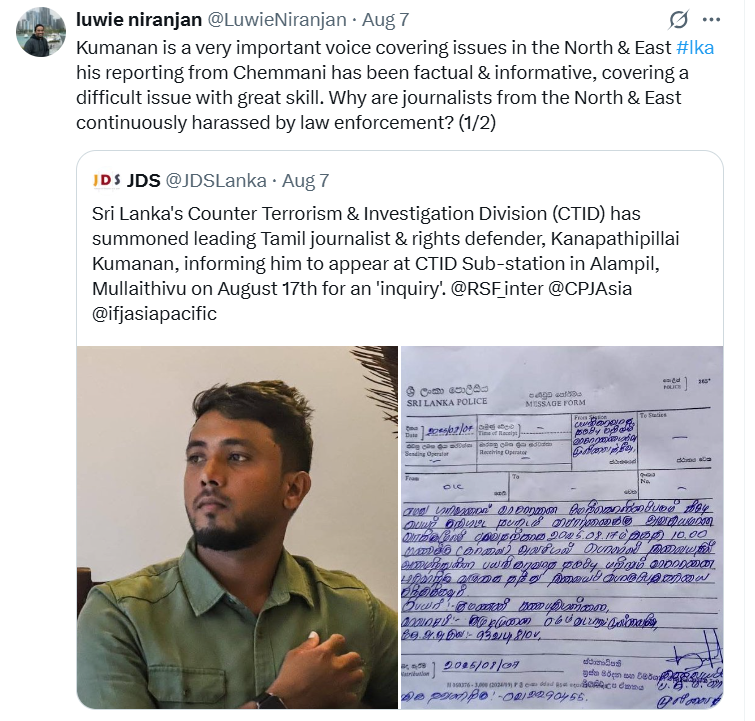
“@kumanan93 has been reporting on the excavation of the mass grave in Chemmani. Reporting fact – not opinion. That the govt of Sri Lanka is moving against him shows what a perilous path journalists tread in that country. Esp Tamil journalists. This is worrying,” said poet and translator Shash Trevett.
“Journalist & Activist @kumanan93 has been courageously reporting on the Chemmani Mass Graves. May his voice never be silenced. @anuradisanayake @Dr_HariniA, is this the change you promised the people of the North and East? Shame on you!,” said Journalist & Communications Specialist Munza Mushtaq.
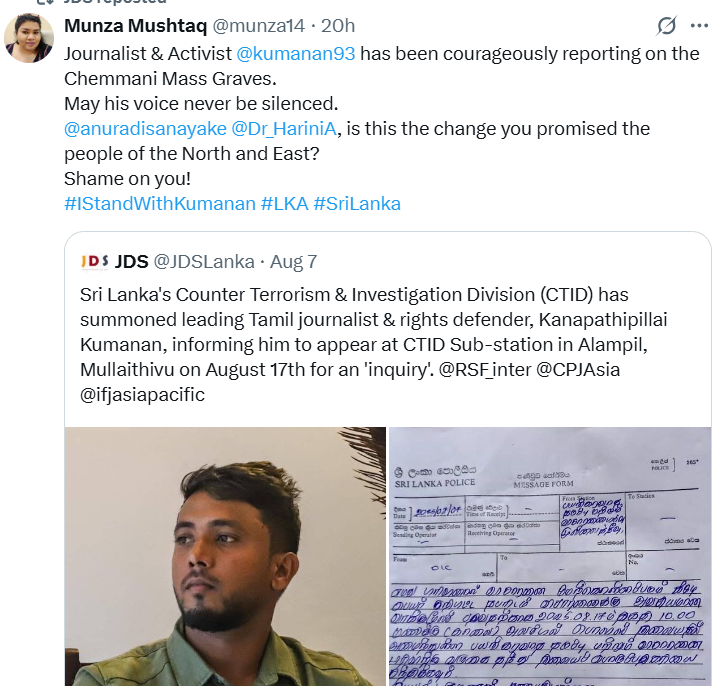
“governments change, but the security state endures. @kumanan93 has consistently done brave and extraordinary work reporting from the north esp on human rights issues which the mainstream media wilfully ignores – most recently regarding the ongoing Chemmani mass grave excavation,” said Dr. Vindhya Buthpitiya at the University of St Andrews.
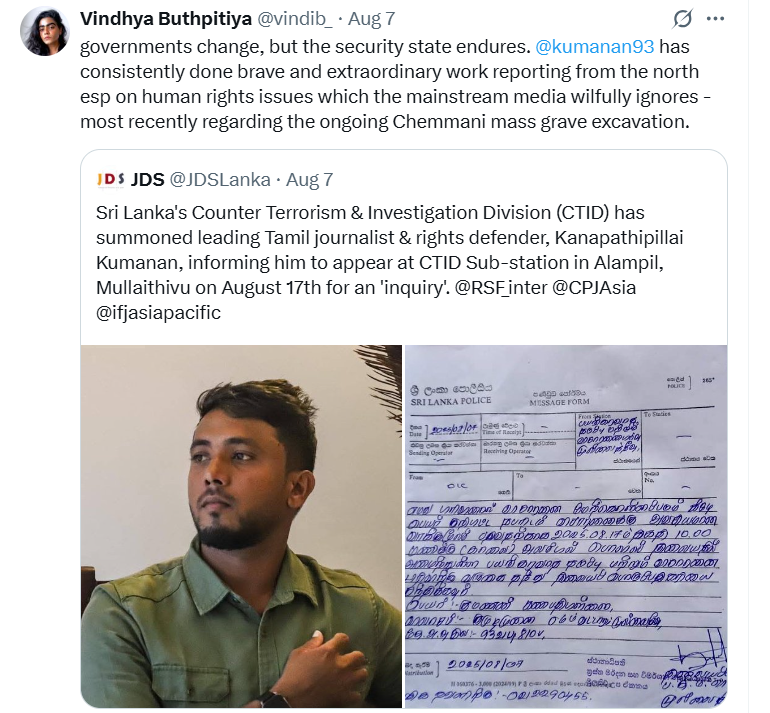
While Kumanan was overseas attending an international course last October, counter-terrorism police officers visited his residence and allegedly warned his elderly father, accusing Kumanan of supplying information to the international community regarding issues such as land grabbing and disappearances in the North.
Photojournalist Kumanan, who serves as the Chairman of the Mullaitivu Press Club, has drawn international attention for his striking photographic and documentary work exposing crimes, corruption, fraud, and human rights violations in the war-affected Northern region.
Photographs featured in the report titled “Legacy of Enforced Disappearances Haunts Sri Lanka”, published by the Office of the United Nations High Commissioner for Human Rights on May 21, 2024, were taken by photojournalist Kanapathipillai Kumanan.
Having reported on the Vanni region in general, and on its war-affected population in particular, for several years, Kumanan has faced repeated threats from security force personnel because of his work. Three years ago, he and fellow journalist Shanmugam Thavaseelan had to face a brutal assault after exposing an illegal timber trade.
As with many other attacks on journalists in the Vanni, justice in this case too is yet to be served.
Ongoing intimidation against Kumanan has been highlighted by a prominent Indian journalist.
“Last month, I had asked him for a video interview, which he couldn’t give owing to intimidation & surveillance,” said Saikiran Kannan, taking to X sharing a screenshot of a chat where Kumanan turned down the interview offer.
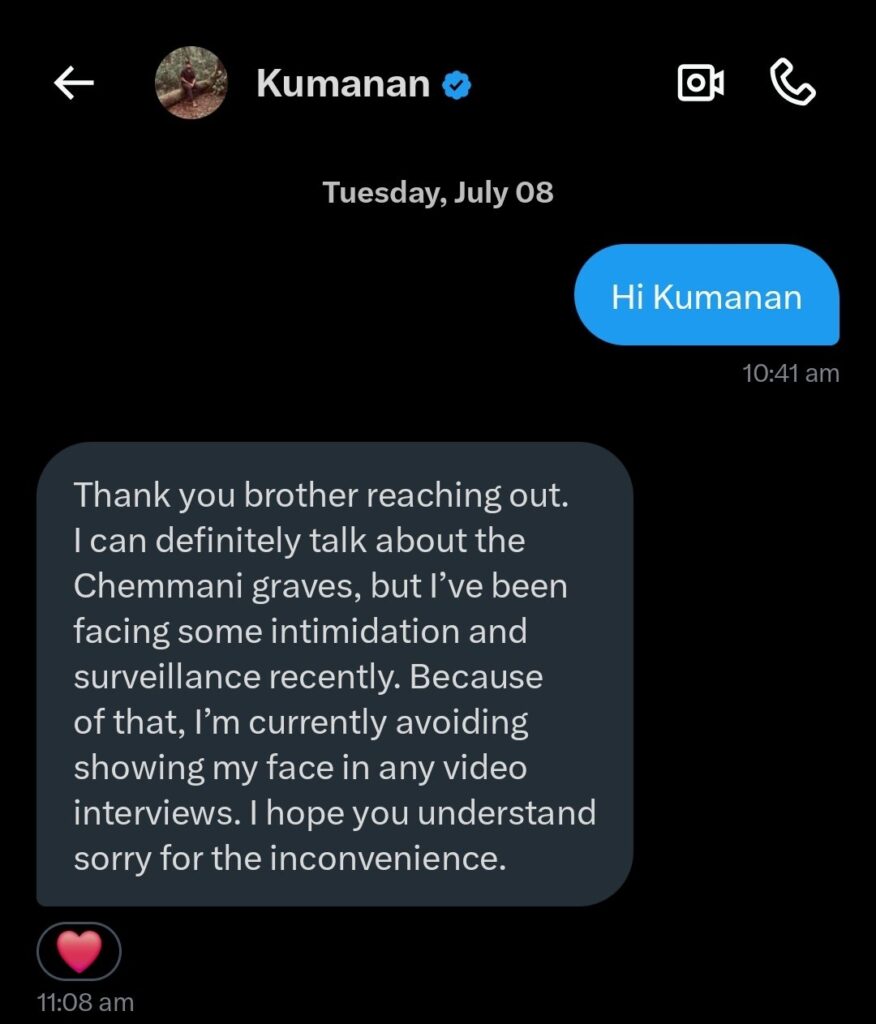
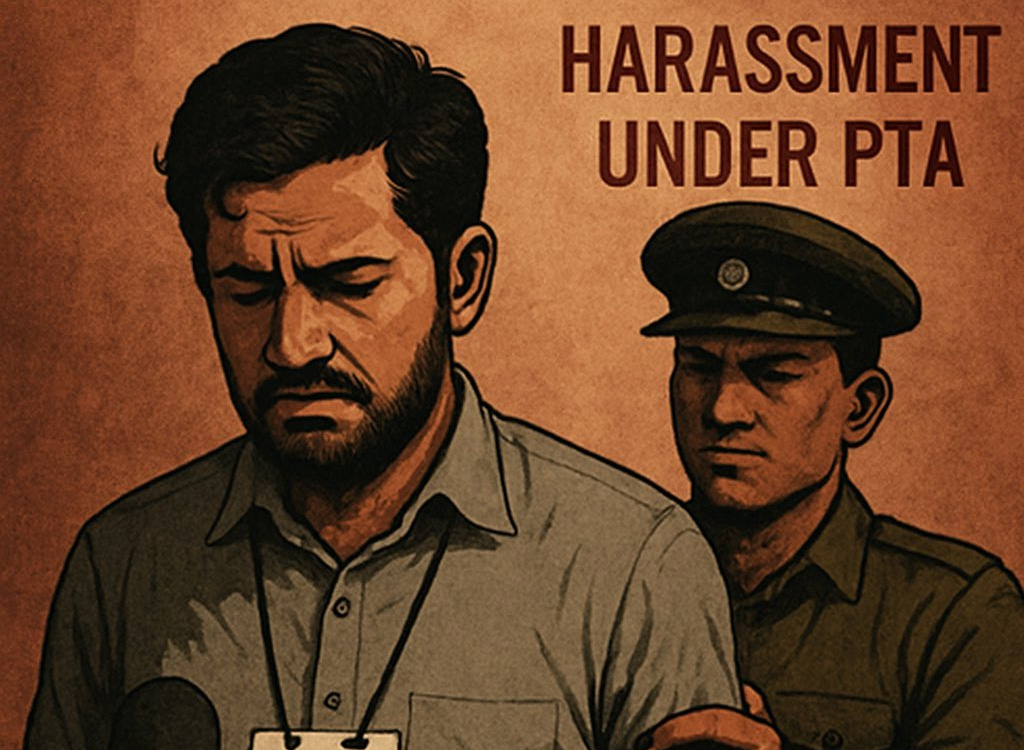


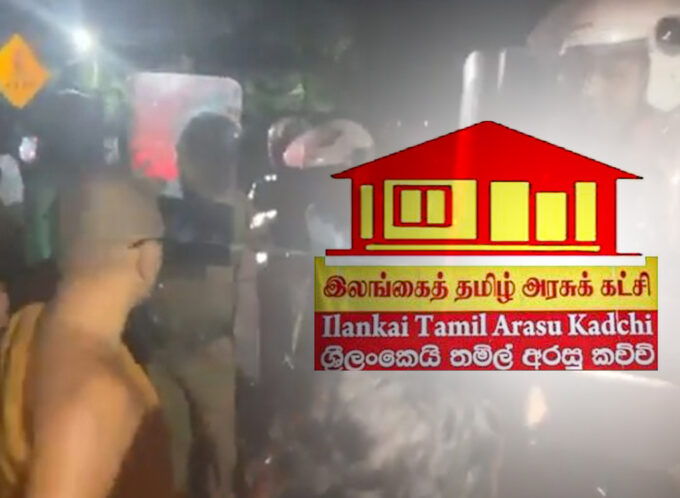
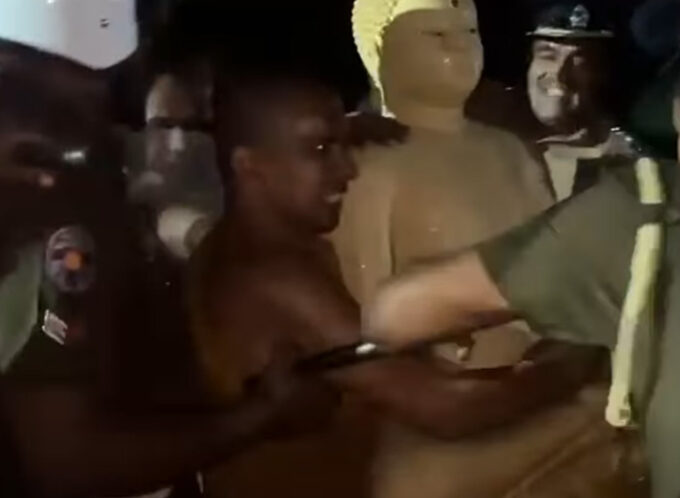
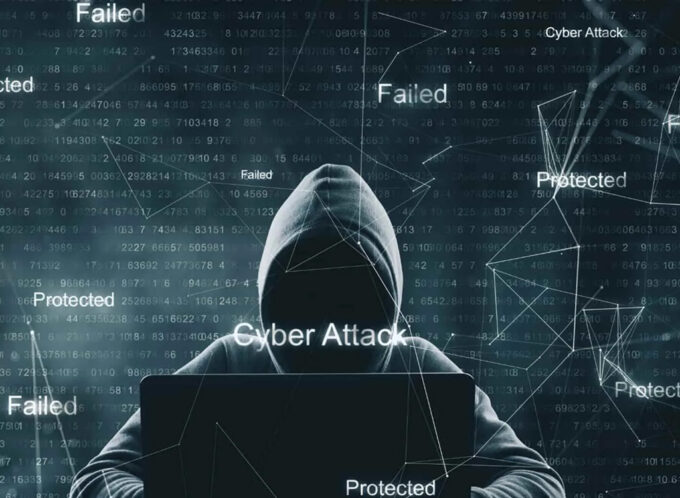
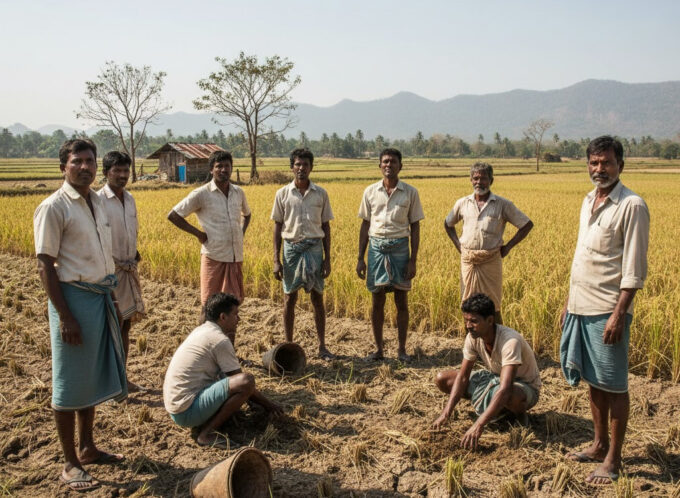


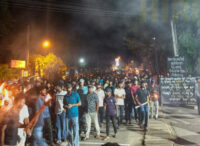
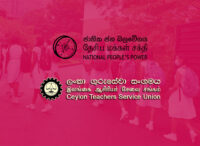
Leave a comment